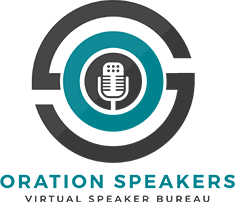You’ve attended many conferences and you know how easy it is to get lost in a sea of panels, coffee breaks, and endless networking. While these events promise insights and connections, the reality often involves sitting through repetitive talks and sharing your details, again. With limited time, it’s crucial to prioritise activities that offer real value. Here are a few ideas on how to save time at conferences and focus on what matters.
Time-saving at conferences begins with a sharp eye for the agenda. It’s tempting to fill your day with sessions that sound promising, but not all are created equal. Avoid talks that are overly broad or led by speakers who recycle the same content year after year. Instead, prioritise workshops and discussions where the format encourages audience participation. Sessions with fewer than four speakers are usually more engaging and allow for in-depth exploration of topics. Remember, not all keynote speakers have something new to say (and that is coming from a Speaker Agent), sometimes the best move is to skip the sessions and invest time in hallway conversations or the exhibit floor.
Networking at conferences is a bit like speed dating—you have a short window to make a strong impression. Yet, many attendees waste time playing business-card bingo, collecting contacts without fostering genuine connections. The goal is to focus on quality over quantity.
Before attending, identify the people you most want to meet and reach out in advance to set up one-on-one conversations. If the event is large and loud, choose a quieter corner for meaningful discussions or even step outside for a walk-and-talk meeting. Remember, it’s perfectly acceptable to skip the social scene altogether if it doesn’t align with your networking goals. That meaningful five-minute chat can be more valuable than an hour-long conversation with someone who’s not relevant to your goals. Approach each interaction with a clear purpose—be it learning more about someone’s work, exploring a collaboration, or gaining insight on a topic.
Using networking Apps, instead of sharing business cards, is not only more efficient but also better for the environment. Several platforms are leading the way in digital business card creation:
- HiHello: A free app that allows users to create, share, and organise digital business cards easily.
- Linq: Offers a professional interface and customisable options for networking.
- Wave: Features a clean design with NFC capabilities for quick sharing
So worth checking out…. (the business cards usually end up in the bin anyway!).
As people in the industry know, most high level conferences are often sprawling affairs with multiple tracks and parallel sessions, making it easy to get overwhelmed, but AI-driven scheduling tools can help streamline your experience. Apps like Guidebook (or whichever one the conference you are at is using), they make it easy to filter sessions based on your interests, receive real-time updates, and even suggest relevant contacts based on your LinkedIn profile. They are also great tools for navigating a large event, offering features like schedule customisation, messaging and maps (especially if you have no sense of direction, like me!).
However, they shouldn’t be your only guide as sometimes, over-reliance on any app (or your phone) can lead to missed opportunities—like spotting an interesting session while passing by, or a chance meeting in a café. It’s all about the balance…Stay open to spontaneity and trust your instincts, and use in-house App or AI to suit you, as it can help avoid common pitfalls, such as attending a session only to realise midway through that it’s not relevant (and you’d rather be eating a sandwich) but with intelligent scheduling, you’ll have more time to focus on value-added activities instead of wandering from room to room.
While scheduled sessions can be valuable, many of the best conversations happen outside the conference rooms—in the hallways, lounges, or even at the bar. Known as the “hallway track,” these impromptu discussions often lead to the most meaningful insights and connections. The beauty of the hallway track is its spontaneity. There’s no rigid structure, no moderator, just a flow of ideas among peers. This is where you’ll hear unfiltered opinions and insider perspectives that aren’t covered in formal sessions. Make a habit of lingering in common areas and striking up conversations with people who look like they’re waiting for someone; you might just stumble upon your most valuable connection of the event, but you won’t get that connection if your face is stuck in your phone!
Also, it is so easy to feel that your presence is required at every session, especially if your boss or colleagues are there. But presenteeism at conferences is just as unproductive as it is in the office. Instead of sitting through every talk, apply the “first round” rule: attend the first few sessions of the day, then choose only those that genuinely pique your interest. Standing in the wings can give you a chance to slip out if a session is not delivering. This strategy ensures you’re only committing your time to the sessions that add the most value, while freeing up time for ad hoc meetings or quiet reflection.
You’ve heard this before, but all us busy people do it, avoid multitasking, in this hyper-connected world, the urge to check your email or scroll through social media during a session is almost irresistible. The truth is, multitasking doesn’t save time—it wastes it. Believe you me, I’m the worst and I usually end up having to do each project again! Research shows that switching between tasks can reduce productivity by as much as 40%. When attending a session, commit to being fully present. Take handwritten notes to capture key points, and jot down any follow-up actions or insights immediately.
I know it might seem counterintuitive, but scheduling downtime during a conference can be one of the most effective time-saving strategies. Downtime allows you to process what you’ve learned, synthesise ideas, and prepare for upcoming sessions or meetings. Use breaks to take a walk, grab a coffee, or even meditate for a few minutes. This mental reset can help you stay sharp and make the most of the remaining day.
Then when you’ve put a long day in and you’re ready to crash, sometimes the idea of evening social events and networking mixers is very off-putting because they can often be a mixed bag. While they offer opportunities for building relationships, they can also turn into time sinks filled with small talk and are painful for introverts. Approach these events with the same discernment as you would a session, give yourself a window, be it a time, or a number of drinks and have a Get-Out plan!
The true value of a conference is often realised after the event, through follow-up (this also applies, if you are a Speaker, follow up to the event organiser and to the agent, they will love you for it). To save time and maintain momentum, follow up with within a week of the conference while your conversations are still fresh in their minds. Personalise each message to reflect the key points discussed and suggest next steps, whether it’s a coffee meeting or an introduction to a colleague.
Time-saving at conferences isn’t just about being efficient—it’s about being strategic. By focusing on quality interactions, leveraging technology, and recognising when to skip a session, you can maximise your time and get more out of each event. Remember, the goal is not just to attend, but to gain insights, build valuable connections, and ultimately, make the time spent worthwhile.
#timesaving #conferences #networking




